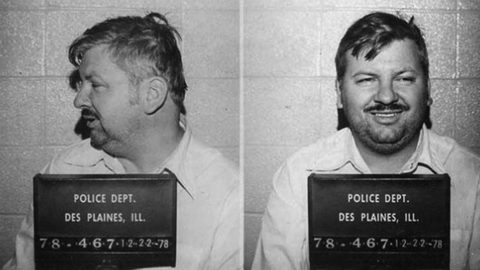In Wednesday’s NP Platformed newsletter, Colby Cosh goes back in time to a very different era: the 1970s, when they still hadn’t formally defined the term “serial killer”.

Des Plaines Police Department mugshots of John Wayne Gacy, 22 December, 1978.
Photo via Wikimedia Commons.
The 1970s are another country, and it is the one your correspondent comes from. We have always been interested in the unidentified victims of John Wayne Gacy because it shows just how distant that country really is, even though it seems, in memory, close enough to touch. People who know Gacy as merely the killer clown may not understand how unbelievable the details are when viewed from 2021.
In 1968, Gacy was actually convicted of raping a 15-year-old boy in Iowa and served 18 months in prison. There were sexual assault complaints against him in Chicago — where he had been sent on probation — beginning in 1971. And when he told his surviving victims that the police wouldn’t believe them, he knew what he was talking about, having become respectable enough to be an honorary police precinct captain. One rape-murder victim whose family was searching for him found that he had done work for Gacy, who simply told them the boy had “run away from home”. In other case, a missing boy’s car was found at Gacy’s house. Gacy just admitted to having bought it from the kid, and the trail ran cold.
About half of Gacy’s victims were minors. In a modern city, you couldn’t have more than a few young people vanish from the street or the bus station without the cops realizing they had an enormous investigative problem. But in the ’70s, there was no awareness of anyone “vanishing” at all. Teenagers really were running away from home in simply inconceivable quantities, bouncing around from city to city, and picking up odd jobs like the ones Gacy offered. In the social environment then existing, parents often just accepted the disappearance of children. And runaways still happen, obviously, but now if some 16-year-old stays out too late and doesn’t call home, there’s an official bulletin on Twitter within a few hours.
Police forces still had not quite formulated the concept of a “serial killer”. Gacy’s luck running out was a major reason this finally happened. He was caught only because someone had seen him speaking with a 15-year-old later reported missing; a local cop happened to have a child who was a high school classmate of Gacy’s last victim, and he did extra legwork that nobody had bothered with, finding out about Gacy’s old sodomy conviction.
The minds of professional crime investigators simply did not have room to accommodate the idea of Gacy — or the dozens more like him who began to turn up in the ’80s. NP Platformed is the first to bewail a world of “helicopter parenting” that is creating stunted, fragile adults; but sometimes we remember the fractured, strange, disorderly post-’60s society from which we ourselves came, and we shudder.



